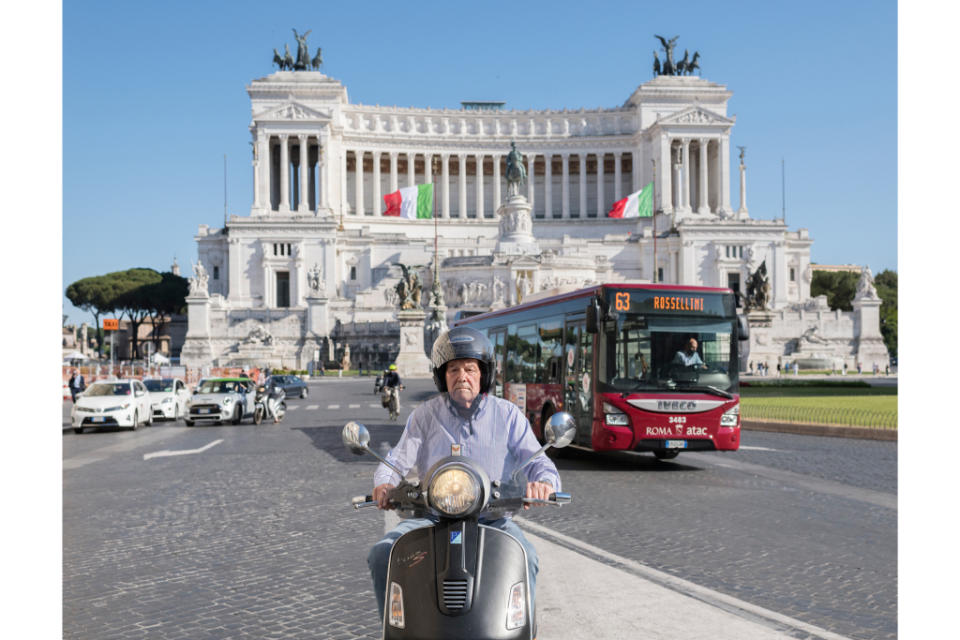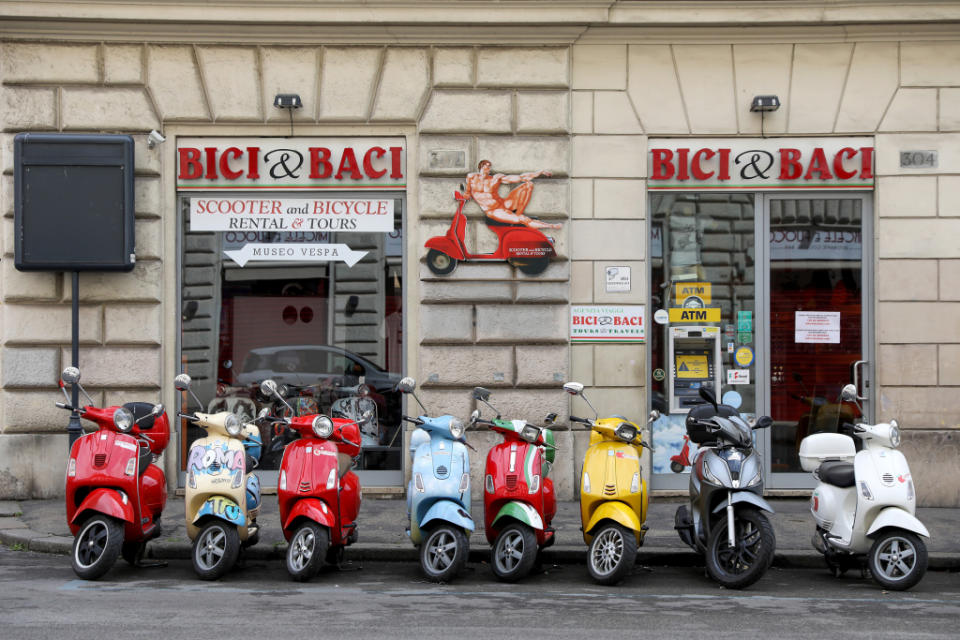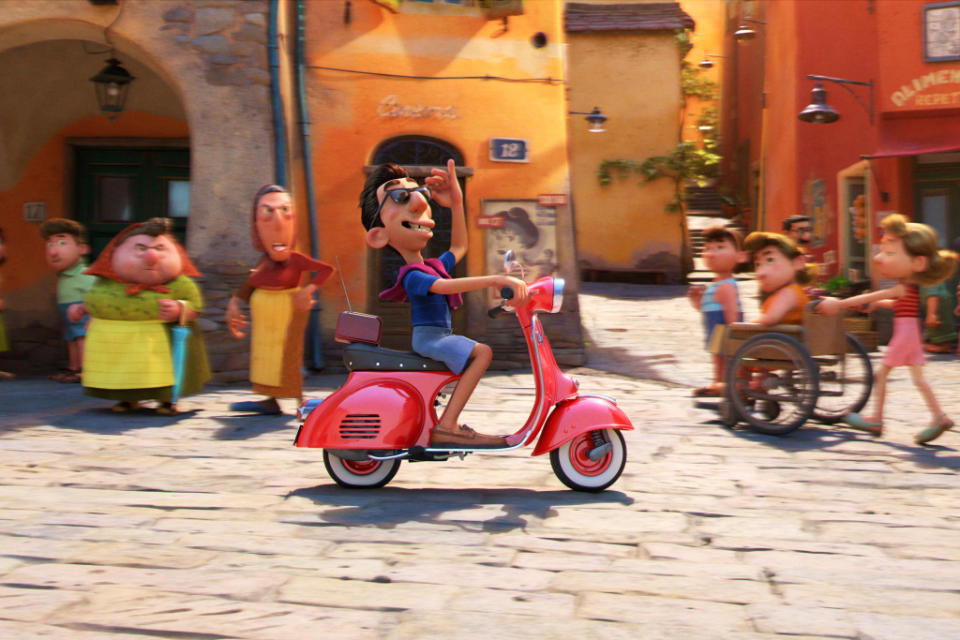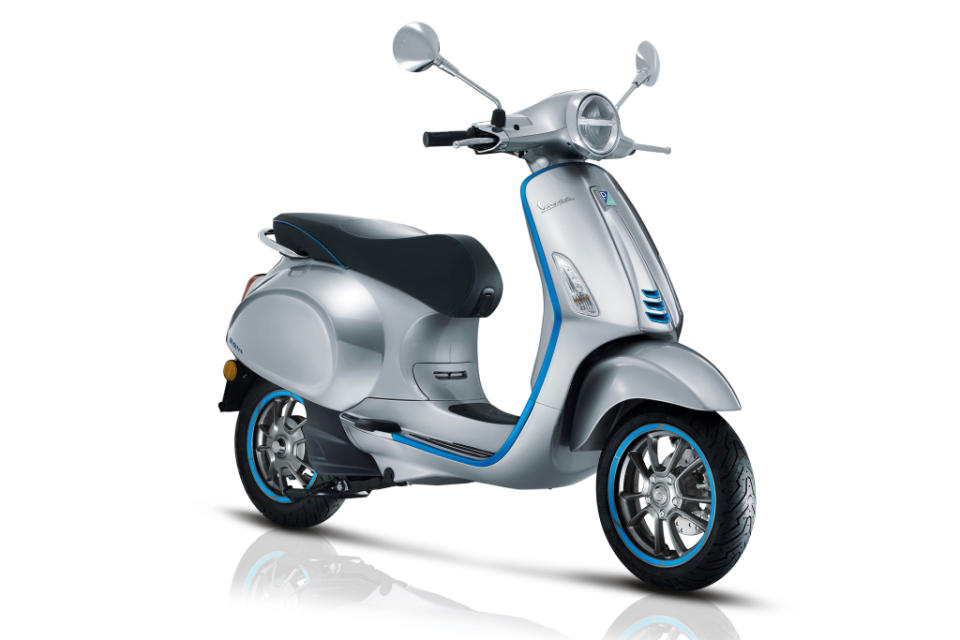Ciao bella! Vespa accelerates out of lockdown with sales purring and investors buzzing
This article is part of an occasional series about iconic brands that are doing surprisingly well in these uncertain times. Previous installments examined the comeback of Doc Martens, the global appeal of Fjällräven backpacks, France's Le Creuset cookware, and the Moka Express coffeepot, the indestructible Italian icon.
The eyes of the world were on Rome in 1960. The city was already renowned as the home of the dolce vita, and it was the capital of Europe’s biggest post-war economic boom. But in 1960, the Olympics were coming to town too. The world’s largest athletic event that year would prove to be a proxy for an increasingly hot Cold War. It was also the first Olympics to have a global television audience.
Yet Roberto Leardi, a wide-eyed 16-year-old living in the periphery of the Italian capital, was enraptured by something else entirely: his older brother’s Vespa scooter.
“For me, it was love at first sight,” Leardi, now 77, told Fortune. “Sometimes I would just sit and stare at the scooter. I wanted to ride it every day.”

The Olympics gave him his chance.
Leardi borrowed 128,000 Italian lire (around $65 today, a good four months’ basic salary at the time) to buy his first Vespa, a pale green 125cc model. The first thing he did was to join the newly founded Rome Vespa Club, which hosted a gathering of European Vespa clubs in conjunction with the Olympics. With hotel rooms scarce, the Vespisti—the Italian word for fans of the two-wheeled icons—slept in tent encampments outside of town. During the day, Leardi was part of a crew of volunteers who led buzzing packs of Vespa riders around town to take in the city’s best-known sites.
“One day we’d ride to the Colosseum or the Trevi Fountain, the next up to the top of Monte Mario for a view of the entire city,” Leardi recalled, his eyes animated by the memories from 61 summers ago. “We could visit the Olympic Village where the athletes lived, and follow some of the outside events. From those days until today, my passion for the Vespa has never waned.”

In the decades since, Leardi has become part of the institutional memory of the Vespa brand. He went on to have long tenures as president of the Rome Vespa Club and the Vespa Club of Italy, both positions he still holds, and headed the Vespa World Club, where he’s now president emeritus. He also owns some 25 Vespas of various makes and models, including a few on display in a small Vespa Museum in the basement of a scooter rental shop in Rome. Even deep into his eighth decade, Leardi’s main mode of transportation is a Vespa: a matte-finished black Vespa GTS Super 300cc, the most powerful Vespa on the market.
From Audrey Hepburn to 'Luca'
The first Vespa was produced 75 years ago, just as Italy’s economy was emerging from the rubble of World War II. It quickly gained popularity in an Italian middle class that at first couldn’t afford a car. But its emergence as a popular icon was sped along by film, starting with 1953’s Roman Holiday, in which Gregory Peck and Audrey Hepburn explored the Italian capital on a Vespa, to Caro Diario (Dear Diary), from 1993, where director and protagonist Nanni Moretti explains his philosophy of life while riding around Rome on a Vespa, to Luca, the latest film from Walt Disney's Pixar, which features a red Vespa in a starring role.
There are nearly 600 official Vespa clubs around the world, and Vespa owners, Leardi included, use words like “soul” and “personality” to describe their scooters.

From a technical standpoint, Vespa’s pressed-steel unibody makes them durable, and, according to Stefano Cordara—the author of Vespa: the story of a legend from its origins to today, released this year to mark the 75th anniversary of the production of the first Vespa—the scooters are the only ones produced using all metal parts for essential components. The Vespa’s flat floorboard and rounded features give it its signature look, largely unchanged since the brand’s inception.
But according to Luigi Frisinghelli, a mechanic who has been repairing Vespas in the northern Italian region of Trentino since the 1950s, the secret to the Vespa’s success is its simplicity.
“Vespas are easier to repair than any other scooters because they’re made well and there are no unnecessary parts,” Frisinghelli told Fortune. “That hasn’t changed over the years. There are Vespas on the road from 20 or 30 years ago that still run well after 120,000 kilometers [around 75,000 miles] or more. They aren’t fancy, but they’re practical.”
Though the general look of the Vespa has remained similar since 1946, several changes along the way have sparked protests from purists. First, there was the move from a side-mounted engine to one in the middle of the scooter, then the change from a manual to an automatic transmission, and now the recent development of a new model with an electric engine. Vespa parent Piaggio counters the criticism by saying each major change strikes a balance between tradition and innovation. And, it adds, its push for cleaner and cleaner transport will likely usher in even further change down the road.
Profits accelerate
Piaggio doesn’t publicly break out sales figures for the Vespa brand. But, according to Cordara, the brand is at the heart of the company’s success. It’s not hard to believe: Piaggio produces scooters, motorcycles, and compact vehicles under seven brand names, most notably Aprilia, Moto Guzzi, and Scarabeo. But chances are, the only one most non-specialists have heard of is Vespa.
“Vespa’s influence for the company goes beyond sales of the actual Vespas,” Cordara told Fortune. “Piaggio sells branded gear and merchandise tied to the Vespa. The Vespa is the reason most people know the company.”
Whatever the formula, it’s working. Piaggo’s profits during the first quarter of this year were just over €11 million ($13.2 million) on sales of €385 million ($460 million). That amounted to a 24% top-line jump on its COVID-battered prior year sales results, and even bested its 2019 Q1 figure.
Analysts are climbing on board. In March, the strong sales performance led Moody’s to upgrade its rating for Piaggio, following similar moves by a number of Italian investment banks.
The share price, too, has reflected that rebound, gaining more than 50% on Milan’s Italian Stock Exchange over the last year. Trading at €3.40 on Friday, the shares are now within striking distance of their all-time high of €3.80 recorded way back in 2006.

The word “Vespa” translates to “wasp” in Italian, a reference to the sound the scooters make on the road (and, according to some, the way a pack of Vespas can swarm around car traffic). Leardi, the Vespista who got his start at the 1960 Olympics, has a different take. To him, the Vespa’s buzzing sound represents the arc of Italian history that he and his Vespas have lived through.
“The Vespa is sold in more than 200 countries and territories, but it’s really part of the fabric of Italy,” he said. “The Vespa put Italy on two wheels. I took my wife on our first date on a Vespa. Young people explored their towns and later on, they started families and took them on picnics or to the seaside. The Vespas were featured in films and television programs, and now I see tourists riding them around. You can’t write the modern history of this country without talking about the Vespa.”
This story was originally featured on Fortune.com
